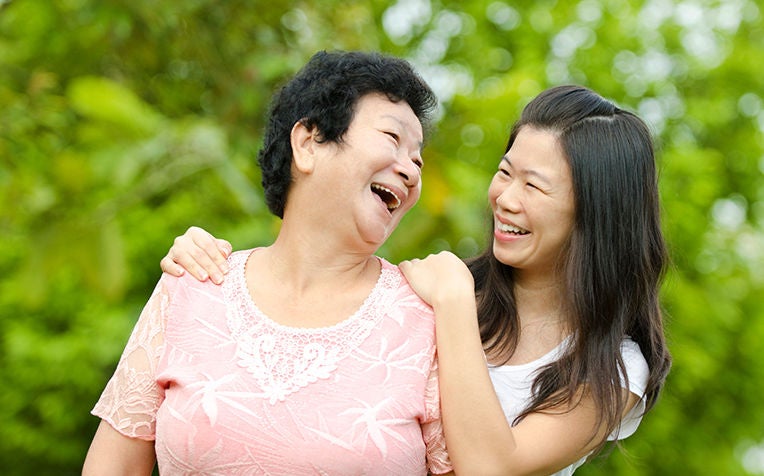
Breast cancer screening by mammogram is important as breast cancer risk increases wth age.
A mammogram is a primary screening tool for breast cancer, the most common cancer among women in Singapore.
By detecting early
breast cancer, a screening
mammogram can help decrease breast cancer deaths, which average about 400 per year in Singapore.
Early breast cancer has a cure rate of almost 100 per cent.
Another type of mammogram is a diagnostic mammogram, carried out to evaluate women with breast symptoms, such as breast pain, a lump or nipple discharge. A diagnostic mammogram is also used to clarify an uncertain finding on a screening mammogram.
“In Singapore, every year, as many as 1,856 women, or
about five women every day, are diagnosed with breast cancer,” says Dr Lim Swee Ho, Senior Consultant from KK Breast Centre at KK Women’s and Children’s Hospital (KKH), a member of the SingHealth group. “However, only about four in 10 Singaporean women aged between 50 and 69 go for regular mammograms.”
He shares more about mammogram procedures and preparation tips.
6 Tips to prepare for a mammogram
Avoid having a mammogram during your menstrual period and one week before your period, when your breasts may be tender.
Do not use any powder, perfume or deodorant on your breasts or armpits on the day of examination. Metallic particles in these products may show up on the mammogram and confuse the results.
Wear a two-piece outfit, e.g. skirt and top, since you will have to remove any clothing from the waist up.
Bring along any previous mammogram films so that the radiologist can compare the current images with previous ones.
You can have an aspirin an hour before the mammogram to reduce the discomfort.
There is no restriction on food or fluid intake and you can continue taking your usual medications.
For more on preparing for a mammgram, watch this video!
What happens during a mammogram?
At the mammogram facility, you will be asked to remove any clothing from the waist up and given a gown to wear. You will also have to remove any jewellery around your neck and upper body.
At the start of the mammogram, a female radiographer will ask you whether you have any breast problems, if you have had breast surgery or if you are taking hormones. She will also examine your breasts for lumps.
You will then be asked to stand in front of the mammography machine where the radiographer will position your breast onto an imaging support table. A plastic plate will be lowered onto your breast, to hold and compress your breast. You will be asked to hold your breath and stand still while the images are being taken.
Firm compression of your breasts will help produce a high quality mammogram, as well as reduce the radiation dose to your breasts.
“During compression, you may experience tightness and discomfort but this will last only for a few seconds,” says Dr Lim.
How does a mammogram work?
The mammography machine uses low-dose x-rays to take images of the breasts. The machine has plastic plates which compress the breasts for a few seconds to take two black and white images – one vertical and one horizontal – of each breast.
The dose of radiation during a mammogram is very small and does not pose any risks to a woman who is not pregnant. Pregnant women are advised to avoid having a mammogram since the x-rays can harm their unborn baby.
The entire mammography procedure lasts about 30 minutes.
When it comes to breast cancer, early detection saves lives
To catch early breast cancer:
Women aged 50 and above - Advised to go for a mammogram once every two years, and
Women between the ages of 40 and 49 - Should consider an annual screening
“Early detection and treatment of cancer would confer more survival and outcome benefit,” Dr Lim said.
Ref: I23 (ed)
More articles on breast cancer:
Tips to Keep Your Breasts Healthy
Subsidies Singapore Citizens and PRs Can Enjoy for Breast Cancer Screening
Contributed by














 Get it on Google Play
Get it on Google Play